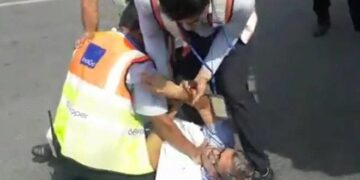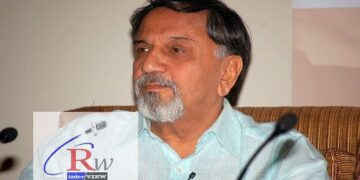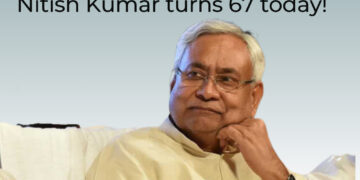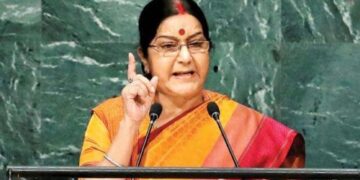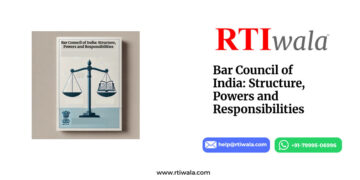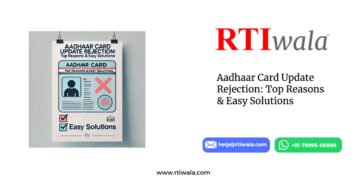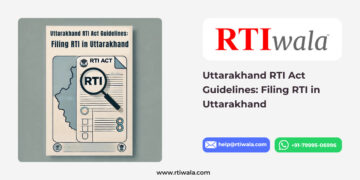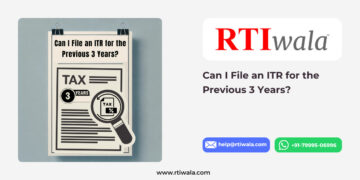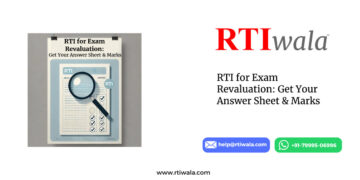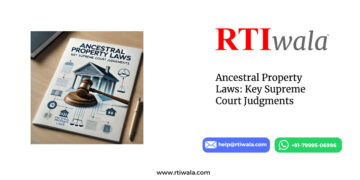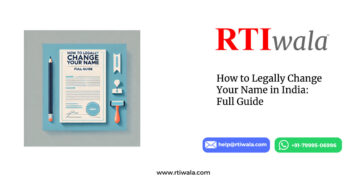RTIwala Explains: In the past one year, a lot has been talked about, debated and numerous convictions were made. November 8, 2016, will be marked in the history for stirring up such a storm across the nation in the name of Demonetization. On completing a year of the Demonetization bid, let us go back in time and understand where it all began and where it is eventually heading to. In order to understand the move better, let us first tell you what exactly is meant by Demonetization.
What is Demonetization?
Demonetization is the act of stripping a currency unit of its status as legal tender. It occurs whenever there is a change of national currency: The current form or forms of money is pulled from circulation and retired, often to be replaced with new notes or coins.
How many times has Demonetization been done since Independence?
1946: When 500, 1000,10000 notes were declared illegal tender.
1978: This time it was under Janata Dal (Morajai Desai Leadership). However, both the times Demonetisation wasn’t a success.
2014: The UPA decided to phase out Rs. 500 notes printed before 2005 and asked people to get it exchanged till a specific date. However, this wasn’t demonetization in the true sense.
8 November 2016 marked the day PM Narendra Modi announced Demonetisation.
Also Read: RTIwala Interviews prominent personalities industries
What were the denominations which were made illegal tender and who were in power?
1946: On one hand, they took away old notes of Rs 500 and Rs 1000 but exchanging them with Rs 500 and Rs 2000 (with new Rs 1000 to come in later). So, it is a straightforward conversion if one looks at just the basics. This is strange if one looks at it. In 1946, the idea was to demonetize but it was more of a conversion.
1978: The then Gujarat Prime Minister Morarji Desai, had decided to demonetize Rs 1,000, Rs 5,000 and Rs 10,000 notes in a bid to combat corruption and black money. The then Finance Minister H.M. Patel in his budget speech on 28 Feb 1978 said:
“The demonetization of high denomination bank notes was a step primarily aimed at controlling illegal transactions. It is a part of a series of measures which the Government has taken and is determined to take against anti-social elements.”
The story of the second exercise starts with a telephone call made to Mr. R Janakiraman, a senior official in the chief accountant’s office in the Reserve Bank on 14 January 1978. He was said to come to Delhi for urgent work regarding exchange control. On reaching Delhi, he was asked to write the demonetization ordinance within 24 hours. He asked for the previous ordinance as guidance. All communications with RBI were shut to ward off any speculation. Then on 16 Jan 1978, the ordinance was announced via All India Radio at 9 AM.
Also Read: Who was Sitara Devi, Why Google Doodle and Top 5 Unknown Facts!
| In Rs crore | Notes and Coins below Rs 10 | Rs. 10 Notes | Rs. 20 Notes | Rs. 50 Notes | Rs. 100 Notes | Rs. 1000 Notes | Rs. 5000 Notes | Rs. 10000 Notes | Total |
| 1977-78 | 1285 | 1825 | 690 | 995 | 4302 | 55 | 17.97 | 0.11 | 9170.1 |
| 1978-79 | 1325 | 1957 | 779 | 1440 | 5369 | 10870.0 | |||
| Difference | 40 | 132 | 89 | 445 | 1067 | 1699.92 |
So, around 73.1 crore was the demonetised amount (Rs 1000 + 5000 + 10000) in 1977-78. Compared to this, 1067 crores were added by Rs 100 alone and the rest of the smaller denominations made up another 650 crores. So, it did not destroy any money stock at all. In 1946, at least some bit was destroyed.

1978- Morarji Desai, Prime Minister
H.M. Patel, Finance Minister
What was the total amount of DeMo notes of Rs 500 & Rs 1000?
As on November 8, 2016, the day demonetization was announced, there were 1,716.50 crore pieces of Rs 500 and 685.80 crore Rs 1,000 notes in circulation. The Reserve Bank of India (RBI) disclosed that almost 99 percent of Rs 500 and Rs 1,000 currency notes which were withdrawn from circulation on November 8, 2016, has returned to the central bank, confirming what the government’s critics had been pointing out about the weak economic rationale for demonetization.
[amazon_link asins=’0670090395,9382622225,0670090077,1684180007,8177084410′ template=’ProductCarousel’ store=’wwwrtiwalain-21′ marketplace=’IN’ link_id=’cbf24a98-c479-11e7-912d-39a8a44c03e8′]
How much money was received by the banks and how much was replaced?
Banks have received 12.44 lakh crores or $184.24 billion in old 500 and 1,000-rupee notes till December 10, 2016, since the currency ban, the Reserve Bank of India. It also said that banks have so far issued 4.61 lakh crores in new currency to people over the counter and through ATMs. Banks had received Rs 14.97 lakh crore by the last date for depositing old cash, adding that the figures were provisional and could be revised. Rs 15.44 lakh crore, representing about 86% of all currency, was declared void on November 8.
Who were the main advisors behind this move and what’re the reactions of other political parties esp MMS, PC, and Yashwant Sinha?
On November 8, when Prime Minister Narendra Modi stunned the nation by stating that the existing Rs 1,000 and Rs 500 notes will no longer enjoy the legal tender status, members of a small advocacy group Artha Kranti Pratisthan in Pune rejoiced.
The nation seems to be heading towards the path the group’s founder Anil Bokil has been pushing for more than 16 years. Bokil and his team, most of whom left well-established careers to be part of the movement to “eradicate black money” in the Indian economy, met all senior politicians, policymakers, central bank officials, bank officials, religious leaders from all faith, and anyone who cared to give them time. Not to mention holding public awareness campaigns through the length and breadth of the nation, to push for their radical ideas.
[amazon_link asins=’0670090395,9382622225,0670090077,1684180007,8177084410′ template=’ProductCarousel’ store=’wwwrtiwalain-21′ marketplace=’IN’ link_id=’cbf24a98-c479-11e7-912d-39a8a44c03e8′]
Bokil reportedly met PM Modi a few months back to give a presentation on financial reforms and was given a mere 9 minutes to put forward his take on the issue. He suggested some key measures to control the flow of black money, the main one being a ban on big currency notes. Apparently, his arguments were quite intriguing to PM Modi and he kept discussing the matter for almost two hours.
What were the main suggestions by Bokil?
- The collection of money under 56 different taxes should be stopped except for import duty.
- A ban on Rs.1000, Rs.500 and even Rs.100 currency notes.
- Each and every transaction should take place via a bank with the help of cheque, demand draft or online
- Revenue collection should be done with a single banking system
One of the reasons given by Bokil was that on an average, transactions of Rs.2.7 lakh are done on a daily basis in India which amounts to Rs.800 lakh crore in a year. Out of that, only 20% of transactions take place via banks and the rest are in cash, hence untraceable. Another reason he put forward for the ban is that about 78% of the population in the country spends only Rs.20 a day and therefore doesn’t require big currency notes.
Also Read: Saudi Arabia Detains Those in Power: When, Why & How?
How did the thinktank react?

Former Finance Minister, Mr. P. Chidambaram,
“Demonetisation is an illusion that it is intended to hurt the rich and benefit poor.”
“Don’t see any rich man getting affected. Even a natural calamity might not have caused so much trouble. The pain and sufferings people are facing in India especially in rural India are indescribable…it is worse than a natural calamity. Even a natural calamity might not cause so much of trouble”.
“The confidence in the Indian economy has been severely dented by a number of measures but the most important being demonetization.
“Look at the numbers, Credit growth, Greenfield investment and aggregate demand are at an all-time low due to demonetization. These numbers matter. The government should have consulted at least Yashwant Sinha, he is their own man. They could have consulted Mr. Manmohan Singh”
“It is like motherhood and apple pie. No one speaks against them; similarly, no one will speak against a cashless society. Inflation has gone down because demand has gone down. But when there is no demand, no production is happening. I am affected. I am not being able to get my Rs. 24,000 and therefore I am complaining. You can’t trivialize a major blow to India’s economy. I’m sorry but the Prime Minister is trivializing a major development in the Indian economy,” he added.
Former Prime Minister Manmohan Singh said the economy is on a “downhill path” because of the “adventure” of demonetization undertaken last year which was not required at all, either technically or economically.
Dr. Manmohan Singh, a renowned economist who is considered to be the architect of the reforms of the early 1990s, said demonetization has not been successful in any civilized country, except some of the Latin American nations. He further said:
“I don’t think demonetization was at all required. I don’t think it was technical, economically necessary to launch this adventure.”
Senior BJP leader and former finance minister Yashwant Sinha hit out at the government for making a “mess” out of the Indian economy, saying that he would “be failing in his national duty” if he didn’t speak up now.
Here are some of his most hard-hitting statements:
- “Demonetisation is not responsible for this deceleration. They are right. The deceleration had started much earlier. Demonetisation only added fuel to fire.”
- “Post demonetization, the income tax department has been charged with the responsibility of investigating lakhs of cases involving the fate of millions of people. The Enforcement Directorate and the CBI also have their plates full. Instilling fear in the minds of the people is the name of the new game.”
Today, as we’ve completed one long year post-demonetization, isn’t is imperative for the ruling Govt. to bring out the Demonetization success(or failure) figures out to the public? After all, it is the common man who suffered and somehow, still is. No, it’s not just about the thinktank this time. It is about the bereaved families of lost ones too. We don’t know if DeMo has been a success or not. And hence, we expect the people in power to declare the facts and figures just as it declared an overnight ‘reform’.
(Inputs by Gehna Kundra)



